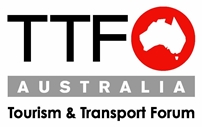TTF Media Release
22/9/2023
SPRING HOLIDAY PLANS REVEALED: APPETITE FOR TRAVEL ON THE RISE DESPITE COST-OF-LIVING PRESSURES
Nearly three quarters of Australians are planning to go away this Spring school holiday period – double the number since Easter – though many are tweaking their travel plans to save money as cost-of-living pressures continue.
A new survey released today by Tourism & Transport Forum (TTF) Australia has found:
- 72% of Australians will go on a holiday in September or October 2023, double the 36% recorded in April this year.
- This includes 60% of Australians who plan to travel domestically (36% within their own state; 24% interstate) and 12% who are heading overseas.
- However, 55% of Australians say cost-of-living pressures are impacting their travel plans in some capacity, compared with 57% in April.
- For those impacted, 21% are shortening their trip, 15% will holiday in their own state, 13% have chosen cheaper accommodation and 13% will holiday locally instead of overseas.
What are the most popular destinations?
- The most popular Australian destination is the Gold Coast (15%*), followed by NSW North and South Coasts (13%), regional Victoria (11%), Sydney (11%), Melbourne (10%) and regional Queensland (10%).
- The most popular overseas destination is Europe (24%**), followed by Indonesia (12%), USA (8%), Japan (8%) and New Zealand (8%).
TTF CEO Margy Osmond welcomed the figures but warned rising living costs are continuing to impact Australians’ decision-making around travel.
“It’s fantastic to see more Australians are planning to go away these school holidays, with the majority spending their tourism dollars here at home. But cost pressures are still having an impact with many shortening their trip or choosing cheaper accommodation to save money,” Ms Osmond said.
“And with international visitors still below pre-Covid levels, our sector is still heavily relying on domestic tourism spending until the international market fully recovers.”
The national survey of more than 1,500 Australians, which was conducted by polling company Pure Profile, also asked:
What does the typical Spring holiday include?
- The most popular accommodation type is a hotel or motel, chosen by 41% of those going away. 32% will stay with friends or relatives, 14% will stay in an Airbnb or Stayz property, 9% will stay in a caravan park or campground and 2% will stay in their own holiday home.
- 67% of Australians going on holiday will stay for one week or less. 22% will go away for between one to two weeks and 11% will go away for more than two weeks.
- 79% of Australians going on holiday will spend less than $5000. 16% will spend between $5000 – $10,000 and 5% will spend more than $10,000.
What about Australians who aren’t going away?
- 28% of Australians are not going on holiday in September or October 2023.
- For those not going away, 61% said they’d be interested in doing more tourism activities in the city or town where they live, but ranked cost as the greatest barrier, followed by a lack of time.
- For those not going away, 51% said they’d be interested in visiting a gallery, museum, theme park, zoo or other attraction, and 68% said they’d be interested in spending time outdoors.
What are Australians’ travel plans for the next 12 months?
- 82% of Australians are planning to go on a holiday within the next 12 months.
- This includes 28% who plan to holiday within their own state, 28% who plan to holiday interstate and 27% who plan to travel overseas.
Are Australians prioritising travel spending?
- Australians ranked holidays/travel as their second highest priority of all non-essential expenses, behind personal care.
- They are prioritising holidays/travel above dining out, entertainment and shopping for their discretionary spending, despite cost-of-living pressures.
| Ranking | Non-essential Expenses (in order of priority) |
| 1 | Personal care (make-up, skincare, haircuts, etc.) |
| 2 | Holidays/travel |
| 3 | Dining out |
| 4 | Gifts for birthdays, weddings & other special occasions |
| 5 | New clothes/shoes/accessories |
| 6 | Entertainment experiences (cinemas, concerts, sporting events, etc.) |
| 7 | Streaming services |
| 8 | Food delivery |
| 9 | Takeaway coffee |
| 10 | Tech gadgets |
Which essential expenses are hurting the most?
- Food and grocery prices remain Australians’ greatest financial strain, followed by petrol prices and energy bills.
| Ranking | Essential Expenses |
| 1 | Food/grocery prices |
| 2 | Petrol prices |
| 3 | Energy bills |
| 4 | Rising interest rates |
| 5 | Insurance premiums |
| 6 | Rental payments |
| 7 | Medical bills |
| 8 | Public transport, taxi or ridesharing costs |
| 9 | Other |
Respondents were asked “Which cost of living pressures are having the greatest impact for you? Rank in order of greatest impact (1) to least impact (9).”
